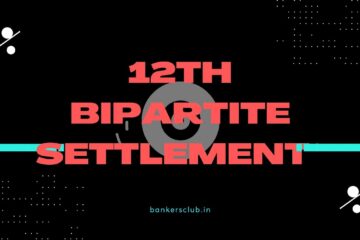Wilful Defaulters – RBI guidelines
You must have come across the term ‘Wilful Defaulter’ or if you have worked on credit desk of a bank, you should have heard ‘Wilful Defaulter List’. So, who is a wilful defaulter, where can you find wilful defaulter list and the procedure and mechanism to identify wilful defaulters is explained in this article.
What is Wilful Default?
As per RBI guidelines, a ‘wilful default’ would be deemed to have occurred if the borrower has defaulted in meeting its payment/ repayment to lender:
- even when it has the capacity to honour the said obligations.
- has not utilised the finance for the specific purposes for which it was availed of but has diverted the funds for other purposes [Diversion of Funds].
- and has siphoned off the funds so that the funds have not been utilised for the specific purpose for which finance was availed of, nor are the funds available with the unit in the form of other assets.
- and has also disposed off or removed the movable fixed assets or immovable property given for the purpose of securing a term loan without the knowledge of the bank / lender.
The identification of the wilful default should be made keeping in view the track record of the borrowers and should not be decided on the basis of isolated transactions / incidents. The default to be categorised as wilful must be intentional, deliberate and calculated.
You may like reading about : 11th Bipartite Settlement
Whether Guarantors can be declared as willful defaulters?
In cases where guarantees furnished by the group within on behalf of the wilfully defaulting units are not honoured when invoked by the banks / FIs, such Group companies should also be reckoned as wilful defaulters.
When a default is made in making repayment by the principal debtor, banks may proceed against the guarantor / surety even without exhausting the remedies against the principal debtor.
In case the guarantor refuses to comply with the demand made by the creditor / banker, despite having sufficient means to make payment of the dues, such guarantor would also be treated as a wilful defaulter.
You may like reading: Working Capital, Holding period and current assets and current liabilities
Mechanism for identification of Wilful Defaulters
- The mechanism should generally include the following:
- The evidence of wilful default on the part of the borrowing company and its promoter / director at the relevant time should be examined by a Committee headed by an Executive Director or equivalent and consisting of two other senior officers of the rank of GM / DGM.
- If the Committee concludes that an event of wilful default has occurred, it shall issue a Show Cause Notice to the concerned borrower and the promoter / director and call for their submissions and after considering their submissions issue an order recording the fact of wilful default and the reasons for the same.
- An opportunity should be given to the borrower and the promoter / director for a personal hearing if the Committee feels such an opportunity is necessary.
- The Order of the Committee should be reviewed by another Committee headed by the Chairman / CMD CEOs and the Order shall become final only after it is confirmed by the said Review Committee.
You may like: CERSAI Registration after 30 Days/ 60 Days – Procedure
Reporting to Credit Information Companies
Banks / FIs should submit the list of suit-filed accounts and non suit filed accounts of wilful defaulters of Rs.25 lakh and above on a monthly or more frequent basis to all the four Credit Information Companies. This would enable such information to be available to the banks / FIs on a near real time basis.
While carrying out the credit appraisal, banks should verify whether the names of any of the directors of the companies appear in the list of defaulters / wilful defaulters. Further, in case of any doubt arising on account of identical names, banks should use independent sources for confirmation of the identity of directors rather than seeking declaration from the borrowing company.
You may like : CERSAI Fees and Charges
Falsification of accounts – Role of auditors
In case any falsification of accounts is observed, and if it is observed that the auditors were negligent or deficient in conducting the audit, Banks should lodge a formal complaint against the auditors of the borrowers with the Institute of Chartered Accountants of India (ICAI) to enable the ICAI to examine and fix accountability of the auditors.
The complaints may also be forwarded to the RBI and IBA for records. IBA would circulate the names of the CA firms, against whom many complaints have been received, amongst all banks who should consider this aspect before assigning any work to them.
RBI would also share such information with other financial sector regulators / Ministry of Corporate Affairs (MCA) / Comptroller and Auditor General (CAG).
Role of Internal Audit / Inspection
The aspect of diversion of funds by the borrowers should be adequately looked into while conducting internal audit / inspection of their offices / branches and periodical reviews on cases of wilful defaults should be submitted to the Audit Committee of the bank.
Read latest news about DA for Bankers
Wilful Defaulter list is hosted on the portal of CIBIL and can be accessed from this link

